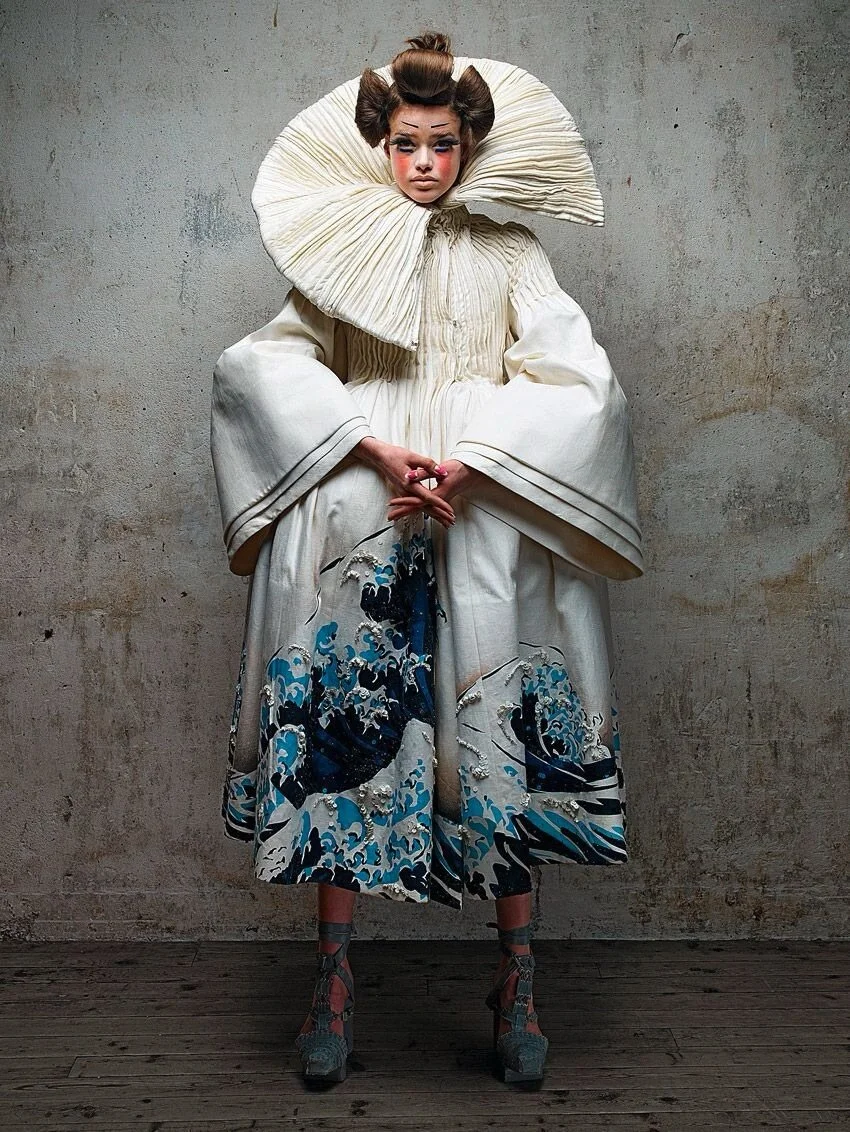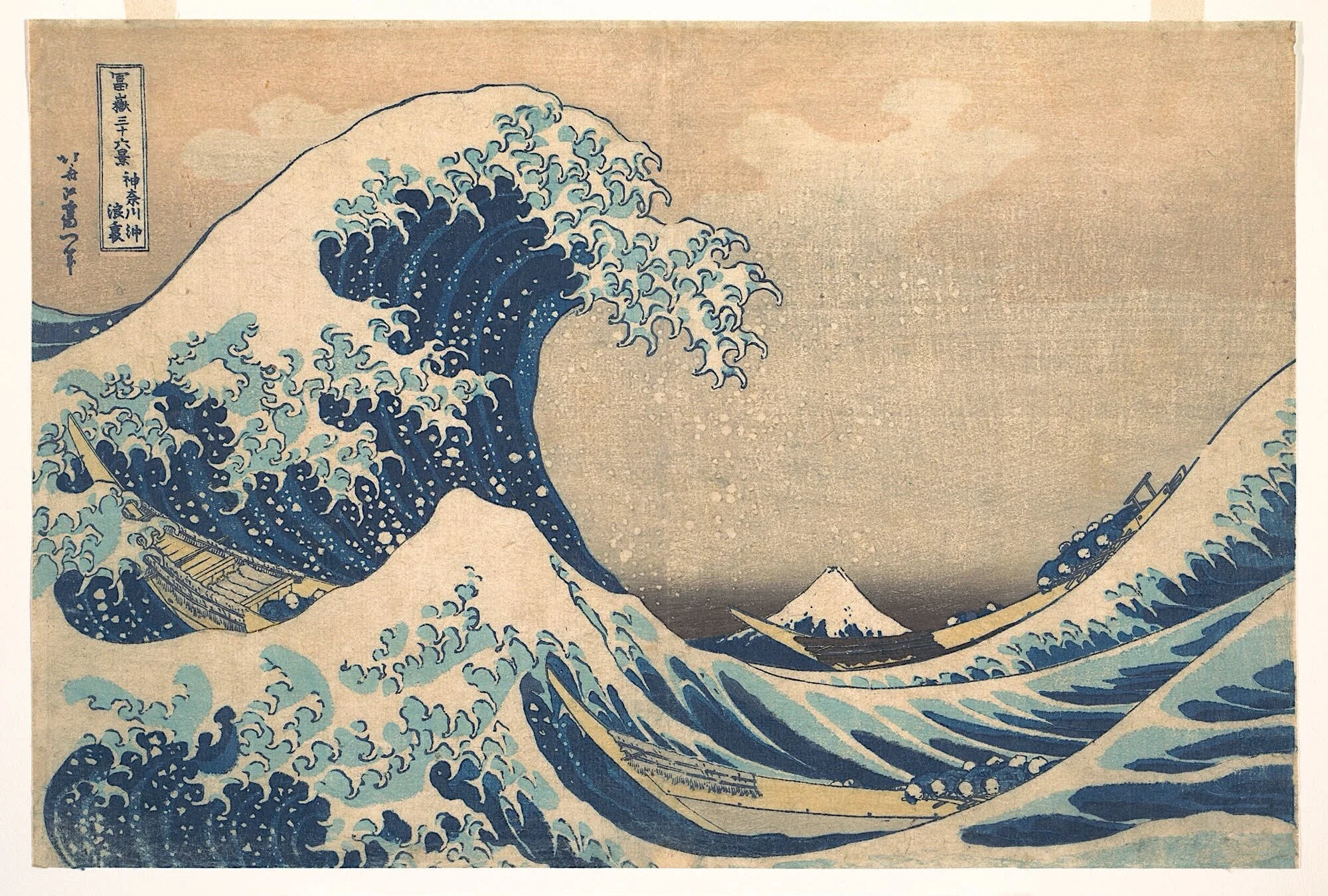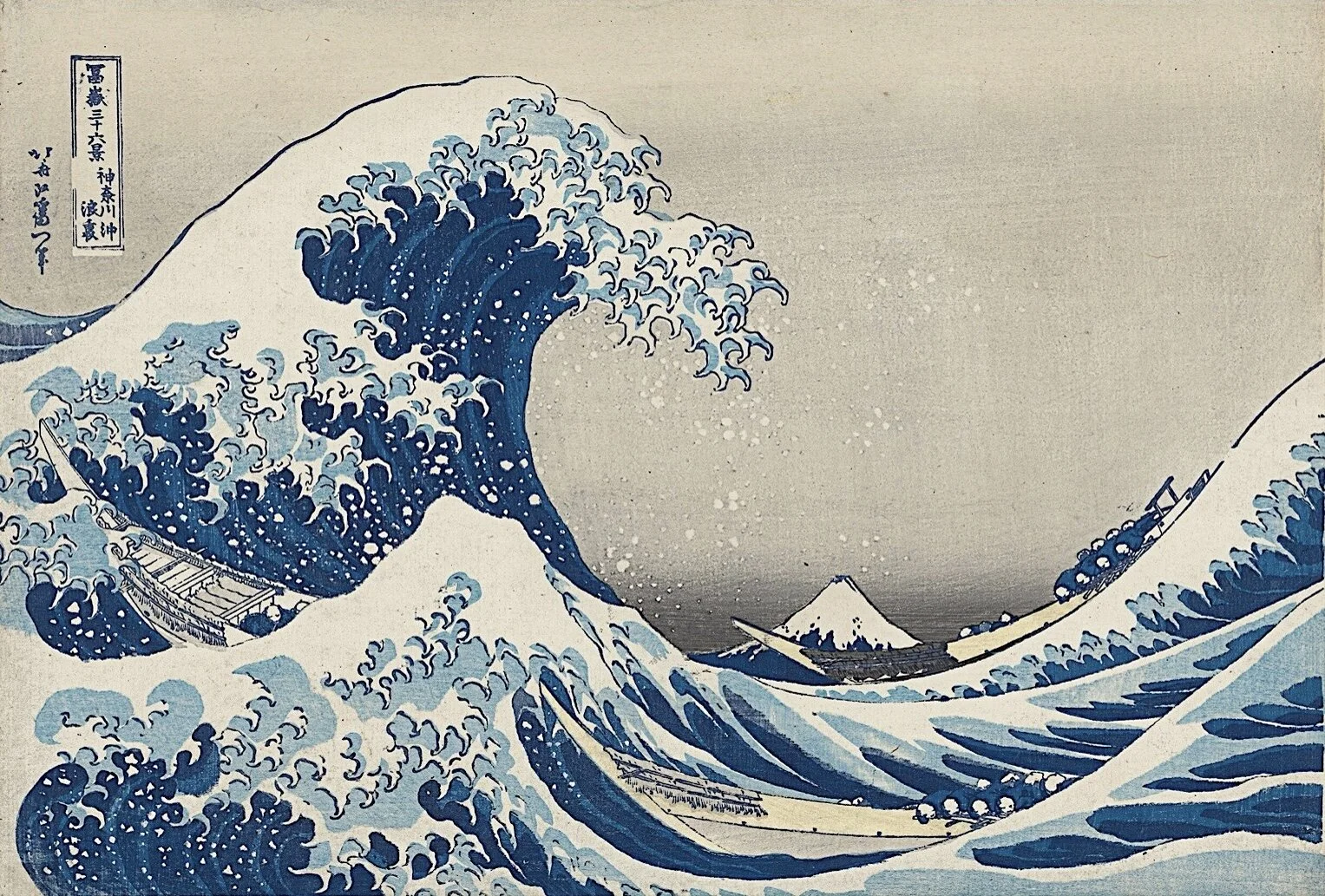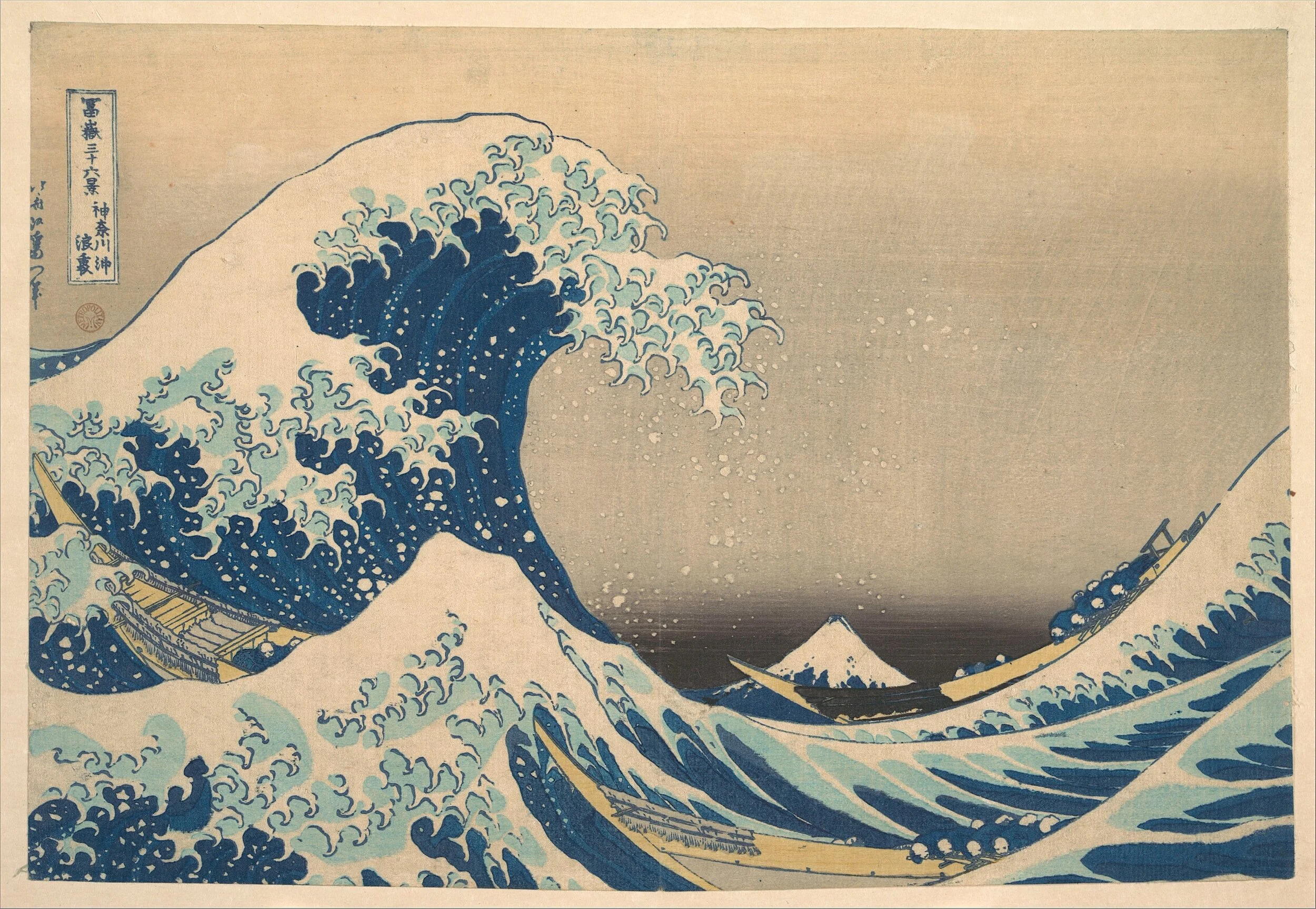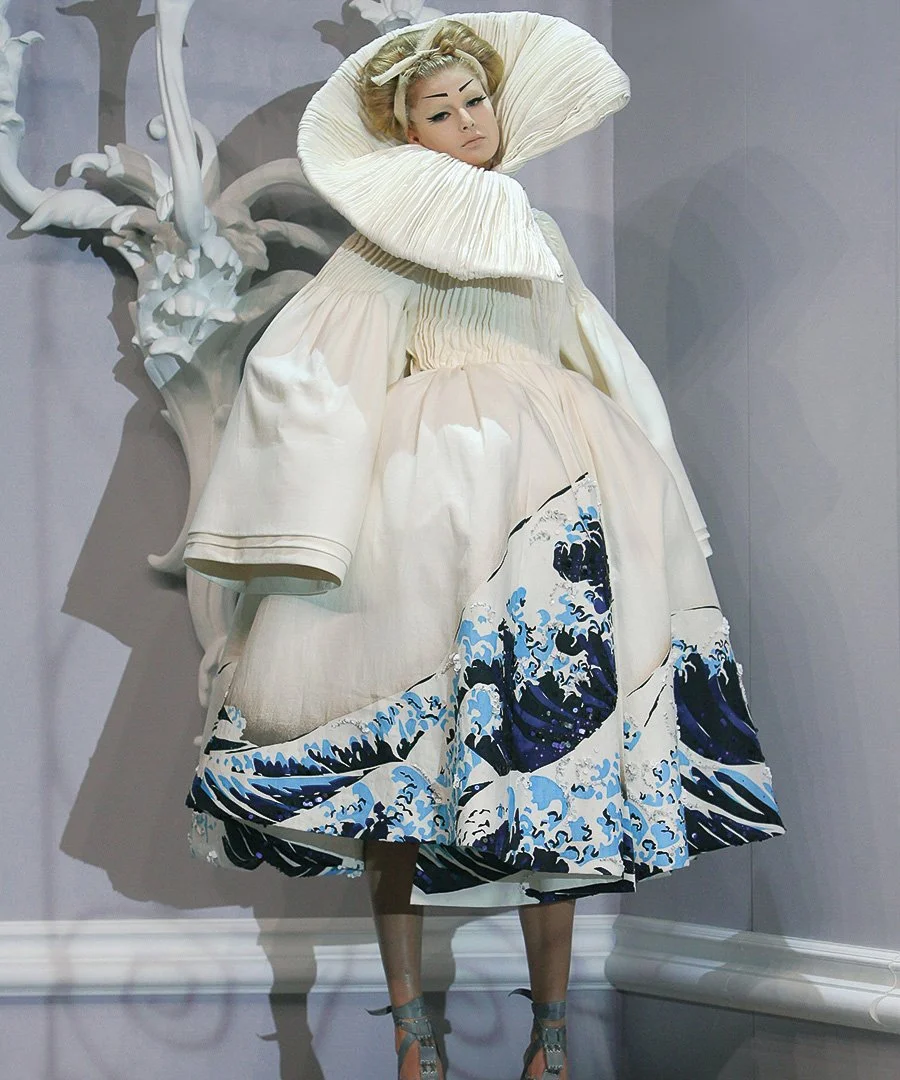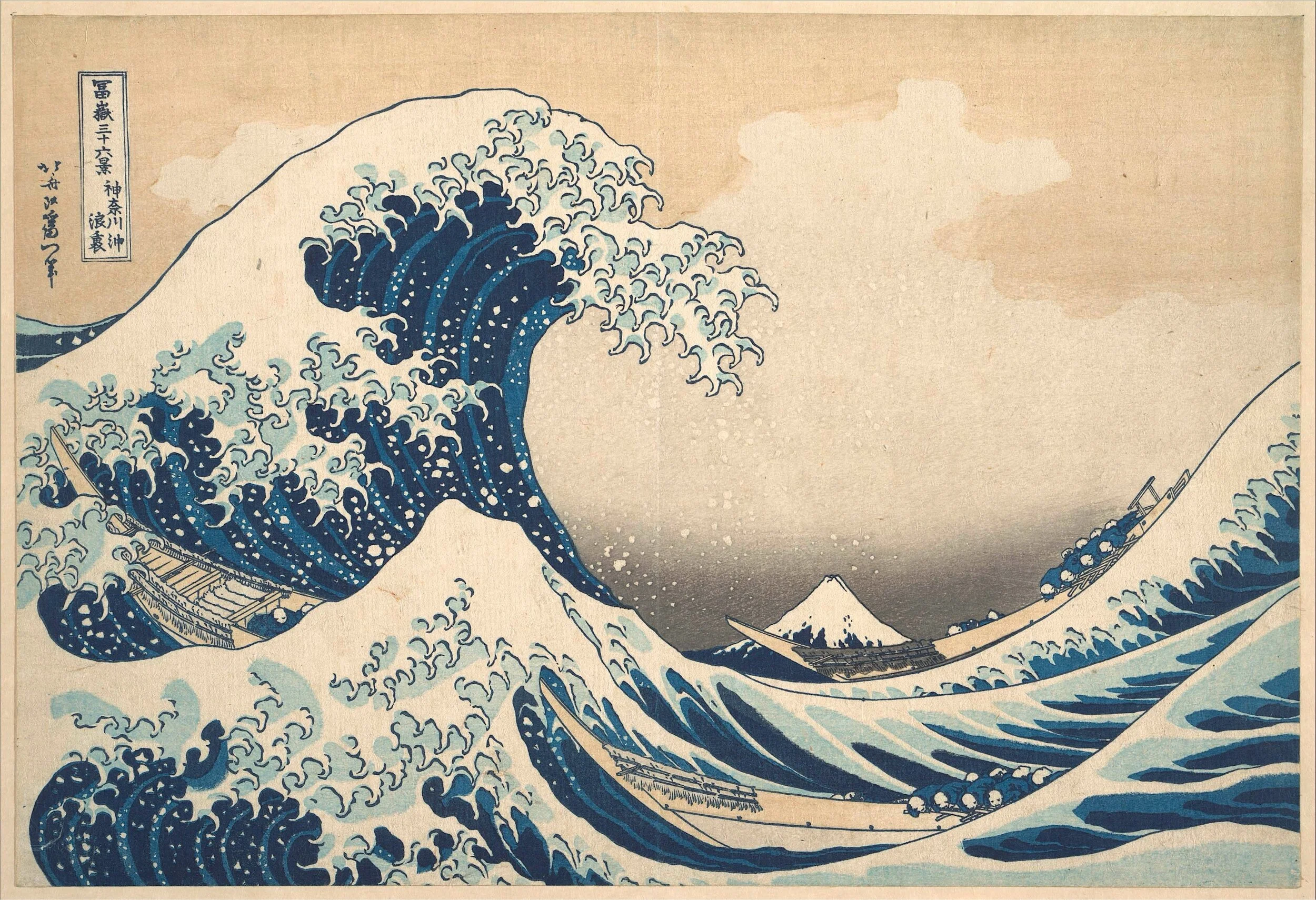THE GREAT WAVE
How the visionary designer John Galliano found inspiration in Japonism, in particular, Katsushika Hokusai’s famous woodblock print entitled ‘The Great Wave’ for his Spring 2007 Dior Couture show. Galliano, known for making his own waves on the runway, brilliantly transformed one of the most iconic pieces of Japanese art into a wonderfully wearable garment…
”Everything about the Dior collection—inspired, he said, "by Pinkerton's affair with Cio-Cio San, Madame Butterfly"—reconfirmed his unique talent to evoke beauty, sensitivity, narrative, and emotion in a fashion show. Kimonos, obis, and geisha makeup were Dior-ified, transformed into delicate translations of New Look peplum suits and full-skirted dance dresses. Each look sprouted yet more miraculous planes of origami folding, their stiff geometries creating necklines like flowers or hovering birds. Every dress had an intense color and character of its own; a hot pink, an eau-de-nil with coral, cascading shades of burgundy and imperial purple. Some were painted, others sculpted from curviform furls of woven straw…” • Sarah Mower for Vogue
Following the Meiji Restoration in 1868, Japan ended a long period of national isolation and became open to imports from the West. In turn, much Japanese art came to Europe and America and quickly gained popularity. The influence of Japanese art on Western culture became known as Japonism. Japanese woodblock prints became a source of inspiration for artists in many genres, particularly the Impressionists… The Great Wave off Kanagawa, also known as The Great Wave or simply The Wave, is a woodblock print by the Japanese ukiyo-e artist Hokusai. It was published sometime between 1829 and 1833 in the late Edo period as the first print in Hokusai's series Thirty-six Views of Mount Fuji. The image depicts an enormous wave threatening three boats off the coast in the Sagami Bay (Kanagawa Prefecture) while Mount Fuji rises in the background. Sometimes assumed to be a tsunami, the wave is more likely to be a large rogue wave… It is Hokusai's most famous work and is often considered the most recognizable work of Japanese art in the world.

